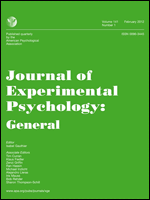Groups synchronize their hearts and behaviors in a collective creative task
New article published in Journal of Experimental Psychology: Human Perception and Performance

When groups were asked to jointly build creative Lego models, their speech, movements and heart rates became increasingly coordinated. Speech and movement coordination drive both heart rate synchronization and subjective evaluation of the teamwork experience. The paper reporting these findings – “A heart for interaction: Shared physiological dynamics and behavioral coordination in a collective, creative construction task” – was recently published in the Journal of Experimental Psychology: Human Perception and Performance.
The study
Researchers from the Interacting Minds Center (Aarhus University) instructed groups of 4-6 people to build Lego models representing their understanding of abstract notions: responsibility, tolerance, safety, etc. The participants’ movements, speech and heart rate were recorded, and they reported their experience of the teamwork. “Much research has been done on how people coordinate their physiology: hearts, skin conductivity, even brain activity, with amazing results.” says Riccardo Fusaroli, lead author of the study “Our questions were: where does this come from and what is it for? Is physiological coordination enough to make us feel closer and more engaged? We hypothesized that in collaborative tasks what people do and say would be central in driving heart rate coordination and be a better predictor of they way people experienced the teamwork”.
How do hearts coordinate?
The data, indeed, confirm the presence of heart rate coordination: when the participants collaborate in building joint Lego models their heart rates raise and fall together. Even more impressively as the participants go through more and more construction tasks together, their heart rates get more and more coordinated. “But here is the twist” continues Riccardo Fusaroli “Hearts do not spontaneously coordinate, they only do so because the participants increase the coordination of their behaviors: they find ways to take turns in building and speaking, how to handle conflicts and quickly reach an agreement”. The more smoothly the participants coordinate these behaviors, the more in synch their hearts are. Indeed, smoothly taking turns in speaking and building coordinates the participants’ breathing and levels of physical activity, two factors known to affect heart rate.
Do hearts predict experience?
The first finding tells us that coordinating hearts do not in itself make a successful interaction, but the coordination of behaviors does. This led to a new interesting question: can teamwork experience be better predicted from heart rates or from behaviors? “Our money was on behaviors!” says Kristian Tylén, “... and the data supported our intuition: speech and building coordination were indeed better predictors of rapport between the participants and experienced team competence.” The researchers do not discount the importance of physiological coordination, however. “If the task requires you to coordinate behavior, behavioral coordination will drive experience” continues Kristian Tylén “in other contexts, such as couple therapy, or even watching a handball game, physiological coordination might be more central”.
New insights
The study shows that behavioral coordination is crucial for teamwork. The more groups develop routines and effective ways to take turns in speaking and acting, the more their heart rates become in sync. Feelings of rapport and team competence are also driven by behavioral coordination. The study thus suggests that more emphasis should be put on how groups develop coordination routines and share engagement in collaborative tasks.
Riccardo Fusaroli, Johanne S. Bjørndahl, Andreas Roepstorff, Kristian Tylén (2016) A heart for interaction: Shared physiological dynamics and behavioral coordination in a collective, creative construction task. Journal of Experimental Psychology: Human Perception and Performance.
The official link to the paper.
Full version available here: http://arxiv.org/abs/1504.05750
Contact information:
Assistant Professor Riccardo Fusaroli, fusaroli@cc.au.dk School of Communication and Culture and IMC



